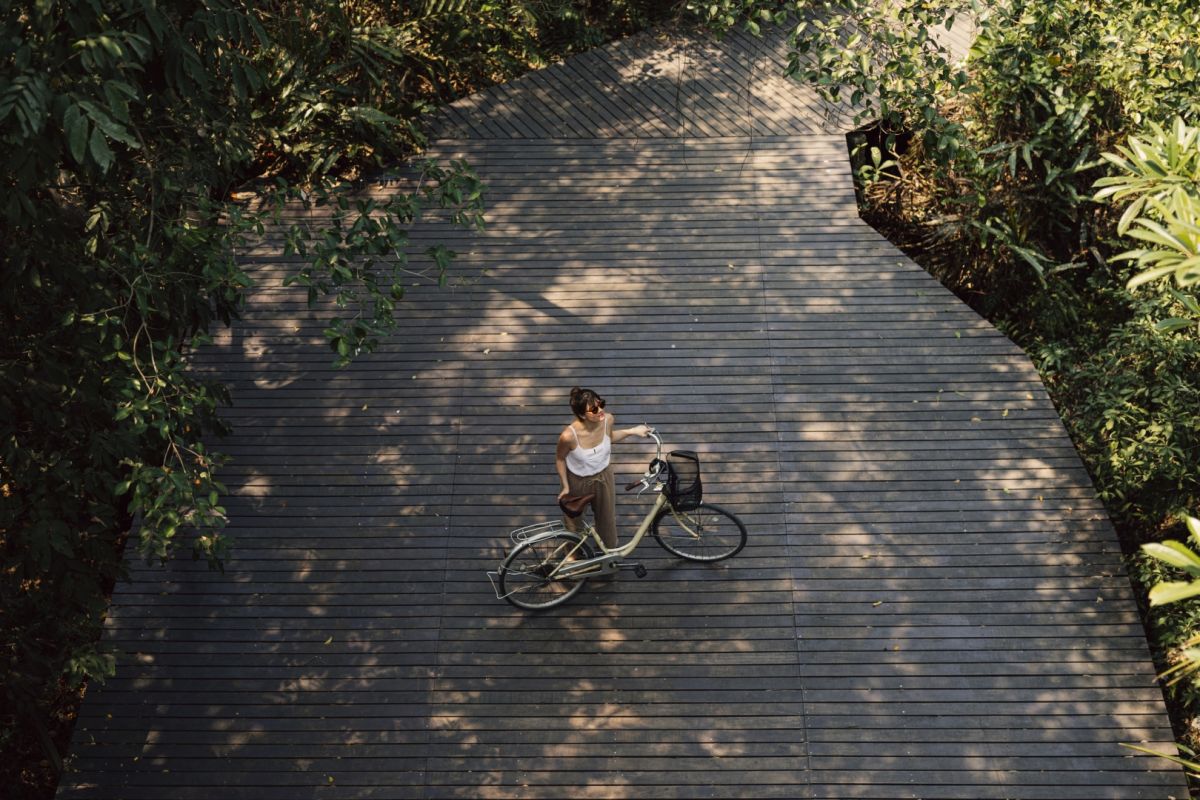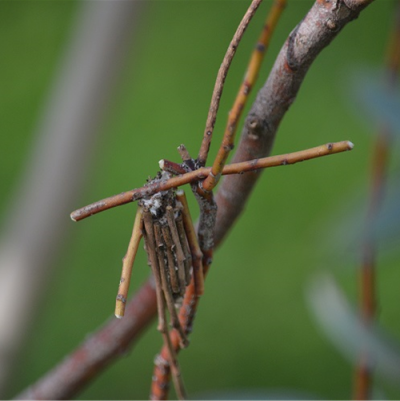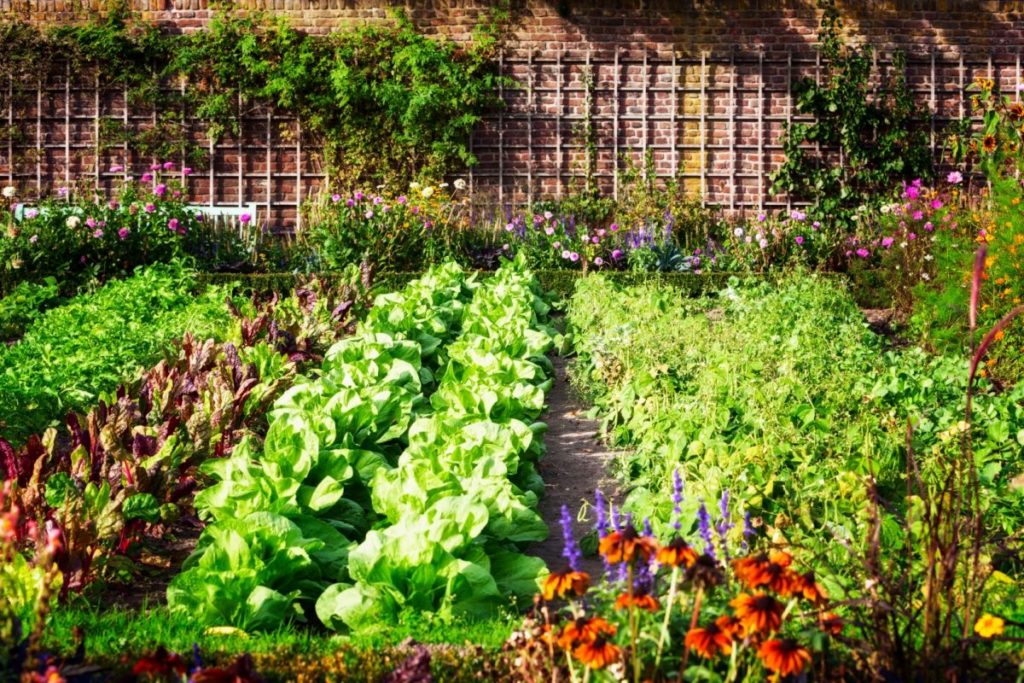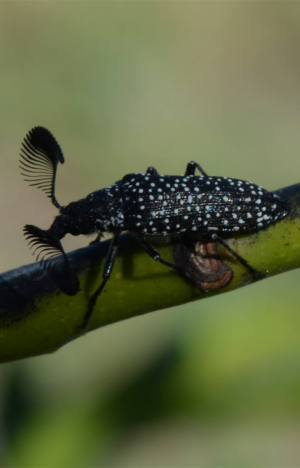
We all know how much nicer it is to stand under a tree on a hot day compared to standing in the sun. We gravitate towards streetscapes that are greener compared with those void of greenery. Even a carpark can be a place of beauty if it is filled with well-maintained plants!

Okay, okay – plants don’t always do exactly what we want them to do. Sometimes branches break off in storms and are a hazard, leaves can clog up our gutters, some roots buckle our pavers and honky nuts fall in undesired places! Sometimes our trees attract raucous wildlife early on a Sunday morning or shade our solar panels. But after spending some time weighing up all the pros and cons of urban forests, we are strongly convinced that the benefits of a greener urban streetscape far outweigh any hurdles we may encounter along the way.
So, what is Urban Greening specifically?
Quite simply, it’s anything that increases the amount of green infrastructure in and around urban areas. More than 90% of Australians live in urban areas and each of us has the opportunity to get into urban greening. Whether that be converting a verge from lawn or pavers to native plants, growing flowers or vegetables on a balcony, planting a tree or four, or helping rehabilitate the natural environment with new vegetation – each effort results in a wide variety of benefits.
Here is Switch your Thinking’s top reasons why it’s great to green the ‘burbs!
1. Increased greening will reduce the ‘Urban Heat Island Effect’
The term ‘Urban Heat Island Effect’ refers to an increase in atmospheric and surface temperatures in areas where paved & dark surfaces dominate the landscape. The structures and hard surfaces absorb the sun’s heat during the day but do not cool down significantly at night.
Newer urban areas can be particularly vulnerable to the urban heat island effect due to a developers clearing entire parcels of land of all vegetation for housing and other infrastructure. The urban heat island effect can increase local temperatures by 4⁰c which can result in an increase in heat-related health issues, water use, energy use and greenhouse gas emissions. Increasing the amount of trees and other vegetation in our urban areas will reduce the urban heat island effect and the effects of climate change whilst improving the health of people, especially those considered most vulnerable.
2. More vegetation equals better air quality
Did you know that two medium-sized trees produce the same amount of oxygen required by one person for a year?
In Australia, bushfire and dust storm events result in high levels of particulate matter in the atmosphere. But human activities including traffic, wood-fired heaters and hazard-reduction burns that have the most significant impact on overall air pollution levels. Due to its damage on humans and nature alike, there is no denying that air pollution needs to be stemmed at the source. Still, plants can help to improve air quality by absorbing and filtering particulate matter, with one of the quiet achievers in this task being… moss!

3. Health and wellbeing benefits aplenty!
The health benefits of urban greening extend way beyond air pollution. Not everyone will share the love, but gardening can bring about high levels of enjoyment and stress relief. There are psychological benefits to spending time in nature and being in the presence of wildlife. Green infrastructure is known to encourage physical activity and reduce anxiety. Positive health outcomes include less obesity, heart disease, asthma and other breathing difficulties, and lower rates of dementia.
Planting vegetables, fruiting trees and vines can provide all the above benefits plus a way to source highly nutritious, cheap and organic food. Gardening is also a wonderful intergenerational activity that can be shared between parent and child or with grandparents.
4. You could slash your bills and increase the value of your property
Sure, it may cost you a bit of time and money to get your urban greening project started. But we can assure you, there is much more to be gained than lost when it comes to urban greening! There are various cost savings to be had, particularly when others get on the urban greening bandwagon.
- Save on energy costs – The more green infrastructure you invest in and around your home, the cooler your property’s microclimate will become and the less likely it will require air-conditioning to be liveable. The shading effect of trees can reduce energy bills by up to $400/year!
- Save on water costs – Replace lawn or water thirsty gardens with hardy, native plants. Although they may need a bit of TLC in the first couple of years, once established, native gardens require far less watering (which will save you time, too).
- Setting up a home garden will save on food cost and on-costs associated with food miles.
- Property value: trees increase your property value – even more so for a whole street of trees. Substantial green infrastructure within and around homes can increase a property’s value by $50,000.
5. Biodiversity building

Habitat loss and land clearing have been the main causes of animal extinction events in Australia. Planting any type of vegetation will provide shelter and protection for these creatures. Soon after planting a native garden, you will start to see new native insects rock up, such as the blue-banded native bee, bag moths and the rare feather horned beetle. These in turn attract small reptiles, birds and frogs to your garden.
Street verges are perfect sites to create habitat links – small areas of land in close proximity to one another that allow animals to travel and to breed, which in turn increases genetic diversity and resilience of a species. For example, a small bird species such as the Splendid Fairy Wren can only fly short distances before needing to rest. These green corridors are best planted with native plant species which are also a food source for native birds, insects and mammals.
6. Green spaces look awesome and makes our homes comfier
Areas with a lot of green infrastructure are often safer – vegetation such as verge gardens can provide a buffer between pedestrians or cyclists from cars and other vehicles. And for those who like to walk, cycle or scoot, green infrastructure can provide shade and therefore a much more enjoyable experience, especially during the warmer months.
Green infrastructure can also stabilise and cool the climate on a hyper-local scale. The shade that trees and other vegetation provide can reduce surface temperatures by up to 20°c, and evapotranspiration – where heat energy releases water stored in plant leaves into the atmosphere – can cool the surrounding area by up to 5°c.
7. Plants are carbon capturing superstars!
In terms of ways of mitigating climate change, planting trees is one of the cheapest ways to remove carbon dioxide from the atmosphere. It is believed that almost a third of all greenhouse gas emissions could be removed from the atmosphere if a worldwide tree planting program was to happen. A mature tree can absorb anywhere between 10-40kg of carbon dioxide every year and up to 1 tonne of CO2 during its lifespan.
8. They also keep stormwater at bay and provide other ecosystem services
Urban greening enables processes such as pollination, insect control, nutrient cycling and soil fertility, soil formation and the stabilisation of the climate. Some roads or parks nowadays are being built without stormwater drains, concrete and pipes – instead they are replaced with swales and buffer strips which are cheaper compared to conventional drainage systems, and they also reduce run-off.
Trees are particularly important for stormwater management as their canopy and root system can absorb up to five times more water than environments dominated by hard surfaces. This prevents soil erosion and also can help minimise topsoil loss due to wind activity.
9. Urban greening nurtures community connections and resilience
Planting a verge garden, some trees on your property or creating a garden on a balcony or other small space is known to inspire your neighbours to do the same.
You may have noticed other people in your area that already have green infrastructure in place, such as a verge or planter box. These existing spaces can help you discover the types of plants that are suitable for your area’s conditions. While you’re at it, you may even get an opportunity to meet the neighbours.
10. We can all get involved!
There are many ways in which you can get into urban greening. You may wish to focus on growing native plants, flowers, vegetables or trees, or even a combination of these. How you approach your project will depend upon what you plant, where you plant it and what it is you are seeking to achieve.
Now that you’ve discovered all the reasons why it’s worth greening the urban environment, be sure to keep an eye out for an upcoming Switch your Thinking blog on the various urban greening options, plant suitability, information about Perth’s soils (the least fertile on Earth!), local government regulation and support, and potential challenges you may face.
